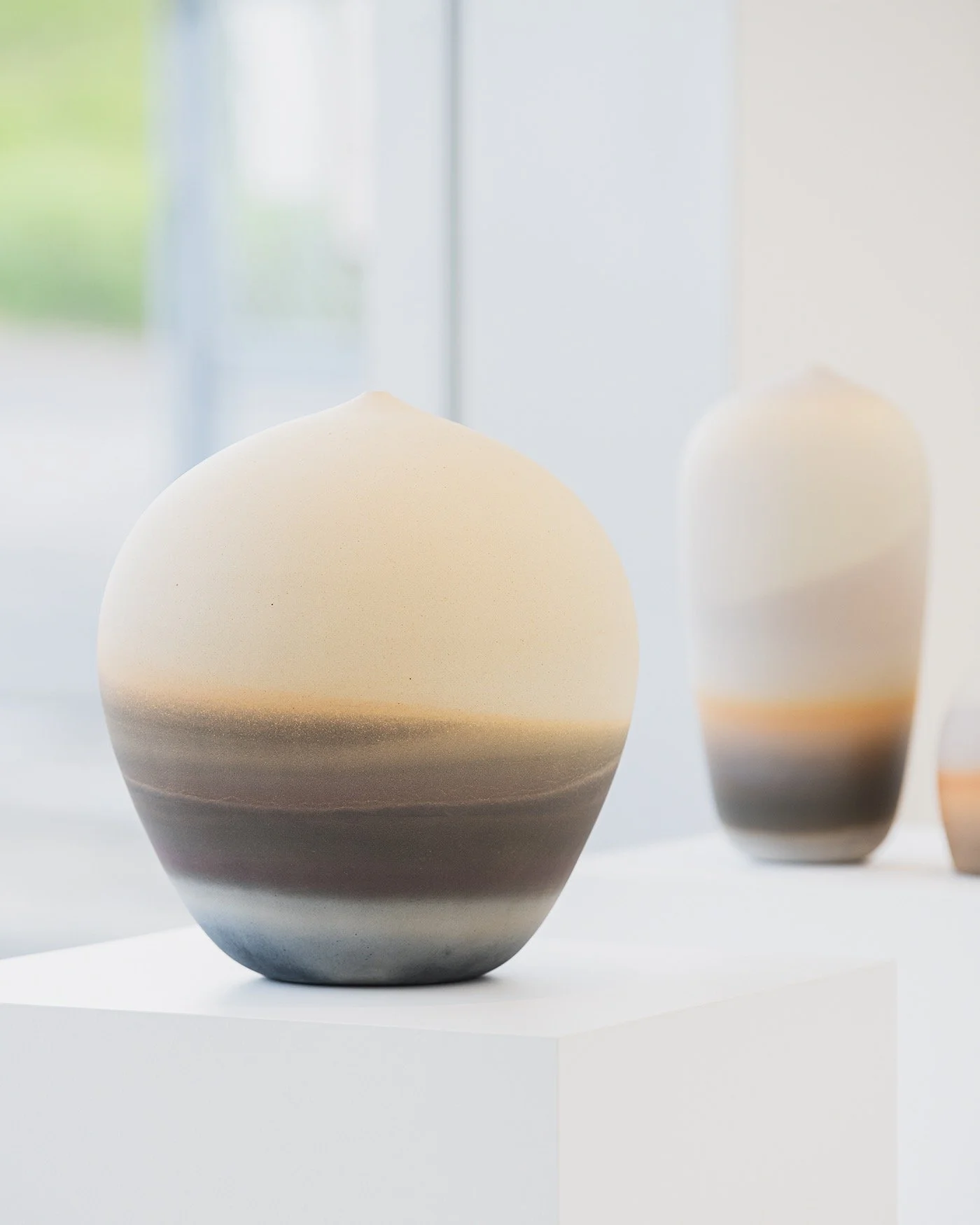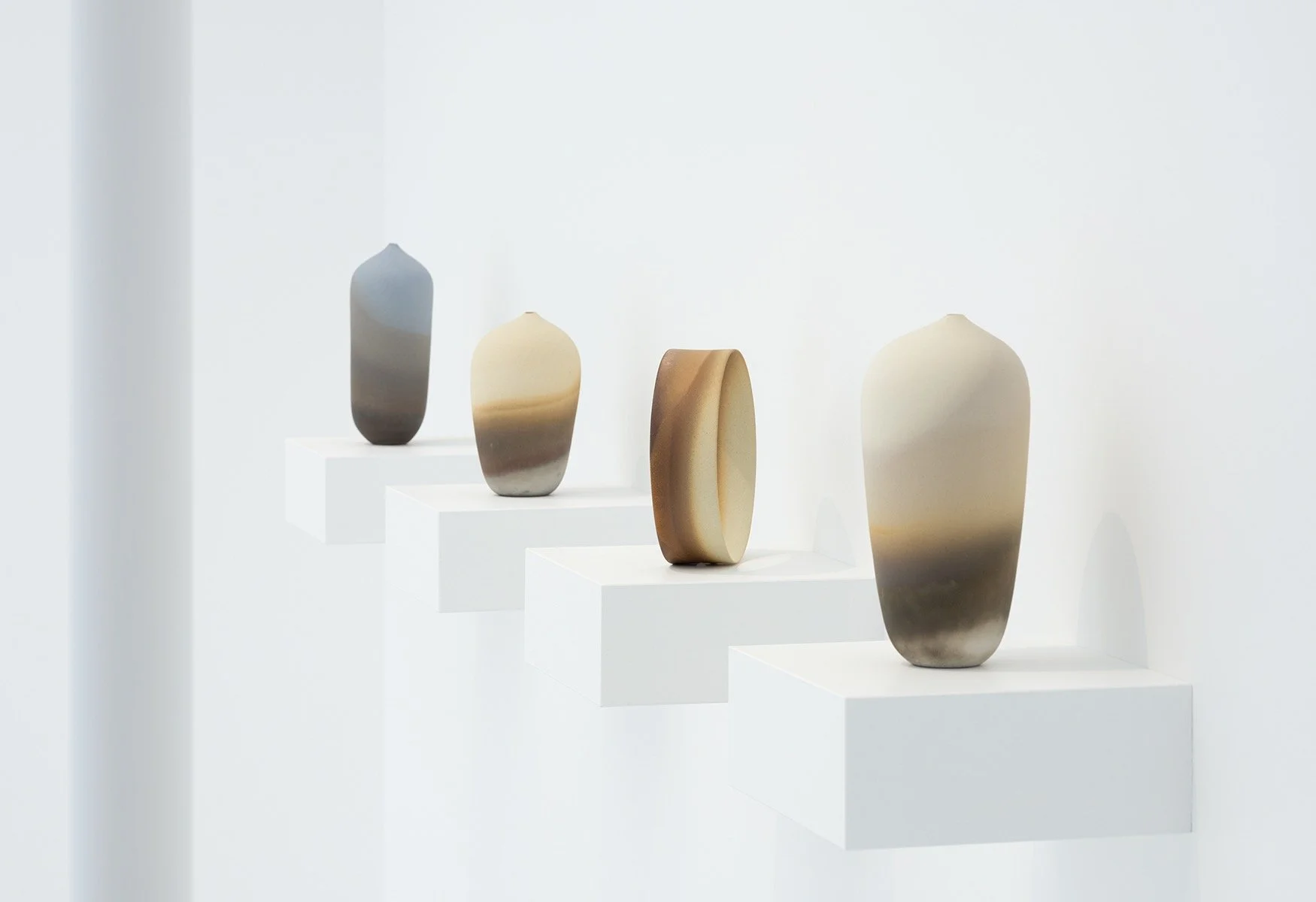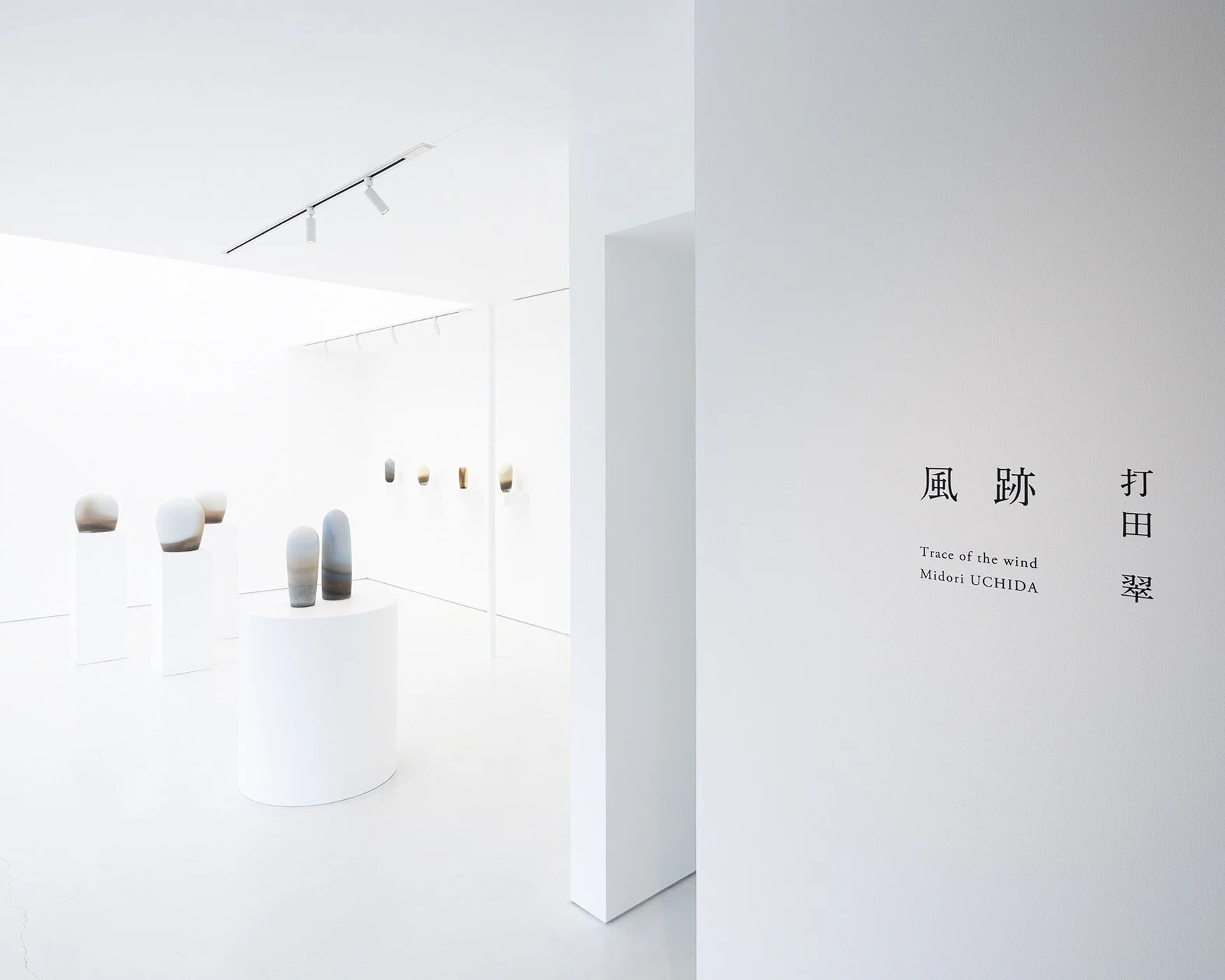Midori Uchida: Breath and Fire in Japanese Ceramic Art
Crossing Gallery, 2 Chome-3-22 Otahonmachi, Minokamo, Gifu 505-0042 (Japan)
I did not discover Crossing Gallery by chance. I traveled all the way to Minokamo specifically to see the work of Midori Uchida, whose pieces had moved me for some time. The gallery, directed by Misa Kuromoto, presents each year a carefully curated selection of about twenty artists, chosen with remarkable precision and sensitivity. The space is bright, quiet, almost suspended. The works seem to float within their own atmosphere. It was in this setting that Uchida’s universe unfolded before me—a soft, almost motionless moment, as if the earth itself were holding its breath.
Born in 1983 in Kobe and trained in Osaka and then in Tajimi—the ceramic capital of Japan—Midori Uchida has developed a deeply personal approach. Her gesture is patient, stripped down, entirely hand-built, without a wheel, giving each piece a slight undulation, an inner vibration. Nothing is rigid: everything breathes, everything seeks its own balance.
Earth, breath, and fire
What immediately struck me, beyond the softness of her forms, is the way Uchida transforms the surface of her pieces. She uses a technique I knew little about before this visit: box firing, or saggar firing. But in her hands, something rare takes place.
Each piece is placed inside a clay box, surrounded by rice husks. During firing, these light husks burn down slowly, releasing a subtle carbon that settles onto the surface. This process creates gradients, landscapes, nuances that feel almost archaic—as if the clay were preserving the memory of an ancient combustion.
To this traditional carbonization, Uchida adds her own language: the introduction of metallic particles into the clay body itself. The reactions are unpredictable—sometimes soft, sometimes more vivid—but always right. These are controlled accidents, the result of a constant search for the delicate point between intention and chance.
As I contemplated her pieces, I had the impression that air had entered the material and gently inflated it from within. The narrowed openings recall classical vase forms, but their volumes speak of something else: movement, breath, what circulates and vanishes in an instant.
A few notes on ceramic techniques
Uchida’s approach is rooted in a broader range of techniques that she bends, deepens, or combines:
• Handbuilding
Without a wheel—only palms, fingers, and occasionally a wooden tool. This method produces irregular, vibrant, almost organic forms impossible to achieve mechanically.
• Saggar firing
An ancient technique using a closed container—a clay box—to protect or alter the piece during firing. Inside, combustible or mineral materials (rice husks, sawdust, seaweed, metallic salts…) are placed. They transform and react at high temperature, creating unique effects that cannot be replicated identically.
• Carbonization firing
The burning of organic matter deposits carbon on the clay. This produces the blacks, greys, and washed-out shadows characteristic of certain traditional Japanese ceramics, especially in rural regions.
• Adding metals to the clay
Uchida enriches her clay with metallic particles. In the kiln, they react with carbon, oxygen, or silicates, generating unexpected nuances: iridescent gradations, marbling, flows of color that seem to form spontaneously. It is one of the most personal signatures of her work.
• The absence of glaze
Her pieces are not glazed: it is the smoke, the carbon, and the metals that create the “skin” of the work. A radical choice that requires absolute mastery of the firing conditions.
This constellation of techniques, combined with a keen sense of form, makes her work instantly recognizable.
A rare, deeply contemporary body of work
Uchida’s work is both calming and mysterious. It speaks of impermanence, transformation, and the simplicity of a repeated, almost meditative gesture. At a time when so many objects clamor for attention, hers invite silence.
What makes her work truly unique is the way she brings together several demanding techniques—handbuilding, saggar firing, carbonization, the addition of metals—into a combination of exceptional rarity. Few artists master even one of these approaches individually; Uchida allows them to converse with a coherence and subtlety that are distinctly her own.
In Japan, her reputation is already well established. She is regarded as one of the significant voices in contemporary ceramics—regularly exhibited, closely followed, recognized for the singularity of her aesthetic and the precision of her craft.
I walked out of Crossing Gallery with the feeling that I had encountered a rare and sincere body of work, one that does not force itself upon you but quietly commands your attention. A precious encounter in the heart of Japan—and a journey more than worth the effort.
Her work is on view at Alt.1550 Art Gallery in Grimentz. For inquiries, please contact us.
Credit Photography: Masashi Kuromoto.









